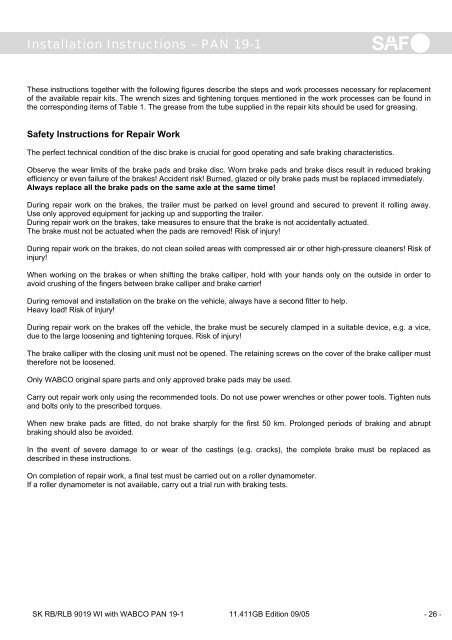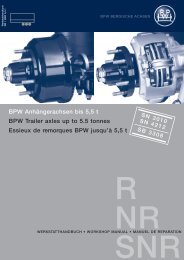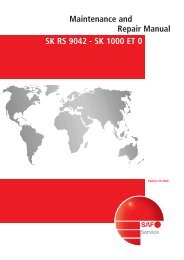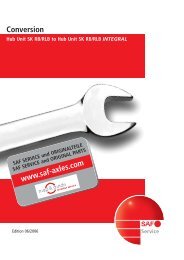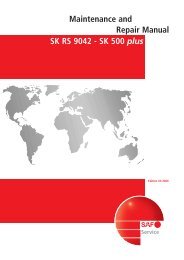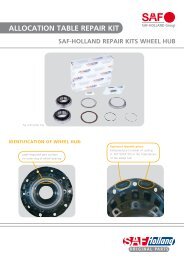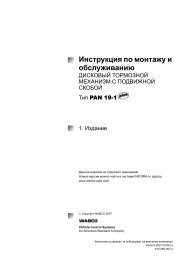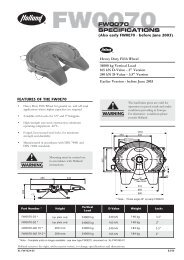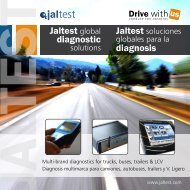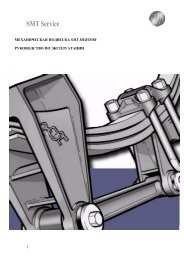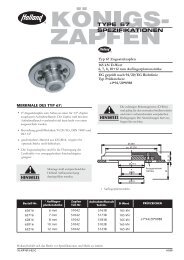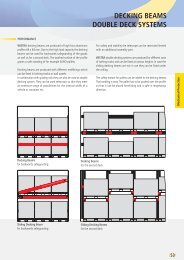Maintenance and Repair Manual for SAF Disc ... - Jupojos technika
Maintenance and Repair Manual for SAF Disc ... - Jupojos technika
Maintenance and Repair Manual for SAF Disc ... - Jupojos technika
You also want an ePaper? Increase the reach of your titles
YUMPU automatically turns print PDFs into web optimized ePapers that Google loves.
Installation Instructions – PAN 19-1<br />
These instructions together with the following figures describe the steps <strong>and</strong> work processes necessary <strong>for</strong> replacement<br />
of the available repair kits. The wrench sizes <strong>and</strong> tightening torques mentioned in the work processes can be found in<br />
the corresponding items of Table 1. The grease from the tube supplied in the repair kits should be used <strong>for</strong> greasing.<br />
Safety Instructions <strong>for</strong> <strong>Repair</strong> Work<br />
The perfect technical condition of the disc brake is crucial <strong>for</strong> good operating <strong>and</strong> safe braking characteristics.<br />
Observe the wear limits of the brake pads <strong>and</strong> brake disc. Worn brake pads <strong>and</strong> brake discs result in reduced braking<br />
efficiency or even failure of the brakes! Accident risk! Burned, glazed or oily brake pads must be replaced immediately.<br />
Always replace all the brake pads on the same axle at the same time!<br />
During repair work on the brakes, the trailer must be parked on level ground <strong>and</strong> secured to prevent it rolling away.<br />
Use only approved equipment <strong>for</strong> jacking up <strong>and</strong> supporting the trailer.<br />
During repair work on the brakes, take measures to ensure that the brake is not accidentally actuated.<br />
The brake must not be actuated when the pads are removed! Risk of injury!<br />
During repair work on the brakes, do not clean soiled areas with compressed air or other high-pressure cleaners! Risk of<br />
injury!<br />
When working on the brakes or when shifting the brake calliper, hold with your h<strong>and</strong>s only on the outside in order to<br />
avoid crushing of the fingers between brake calliper <strong>and</strong> brake carrier!<br />
During removal <strong>and</strong> installation on the brake on the vehicle, always have a second fitter to help.<br />
Heavy load! Risk of injury!<br />
During repair work on the brakes off the vehicle, the brake must be securely clamped in a suitable device, e.g. a vice,<br />
due to the large loosening <strong>and</strong> tightening torques. Risk of injury!<br />
The brake calliper with the closing unit must not be opened. The retaining screws on the cover of the brake calliper must<br />
there<strong>for</strong>e not be loosened.<br />
Only WABCO original spare parts <strong>and</strong> only approved brake pads may be used.<br />
Carry out repair work only using the recommended tools. Do not use power wrenches or other power tools. Tighten nuts<br />
<strong>and</strong> bolts only to the prescribed torques.<br />
When new brake pads are fitted, do not brake sharply <strong>for</strong> the first 50 km. Prolonged periods of braking <strong>and</strong> abrupt<br />
braking should also be avoided.<br />
In the event of severe damage to or wear of the castings (e.g. cracks), the complete brake must be replaced as<br />
described in these instructions.<br />
On completion of repair work, a final test must be carried out on a roller dynamometer.<br />
If a roller dynamometer is not available, carry out a trial run with braking tests.<br />
SK RB/RLB 9019 WI with WABCO PAN 19-1 11.411GB Edition 09/05 - 26 -


